The 1990s: a decade of dial-up internet, iconic fashion trends, and a groundbreaking explosion of music. Radios blasted a vibrant mix, a sonic melting pot where grunge collided with gangsta rap, dance-pop pulsed alongside alternative rock, and electronic music began its ascent to global dominance. Navigating the sheer volume of incredible music from the 90s was a thrilling experience. It was a musical gold rush, and to capture the essence of this diverse era, we’ve curated a list of 50 hit songs from the 90’s that not only topped charts but also continue to resonate today. These aren’t just hits; they’re cultural touchstones, anthems that soundtracked a generation and continue to influence music today. Get ready for a nostalgic trip back to the decade that redefined popular music.
Fuzzy, “Flashlight” (1994)
Emerging from Boston’s burgeoning music scene, Fuzzy delivered a single perfect quasi-grunge anthem with “Flashlight.” This track, with its melancholic melody and introspective lyrics about navigating through darkness, sadly remained under the radar for many. However, those fortunate enough to catch it on late-night MTV shows like 120 Minutes recognized its brilliance. It leaves you wondering how many other gems from the post-Nirvana era are still waiting to be rediscovered, buried in the depths of forgotten major-label albums. While there might not be many as exceptional as “Flashlight,” the hunt for these hidden treasures is always worthwhile for any 90s music enthusiast.
Britney Spears, “Sometimes” (1999)
Britney Spears’ “Sometimes” was more than just her second hit; it was her defining moment of longevity. After the explosive success of “…Baby One More Time,” some wondered if Spears was just a fleeting pop sensation. “Sometimes” emphatically answered that question. This Total Request Live staple solidified her status as a pop icon, paving the way for a new generation of pop stars. It was a clear signal: Britney was here to stay, leading pop music into the next century.
 Britney Spears Sometimes music video still, showcasing the singer in a white outfit on a beach, a quintessential 90s pop scene.
Britney Spears Sometimes music video still, showcasing the singer in a white outfit on a beach, a quintessential 90s pop scene.
The Offspring, “Self Esteem” (1994)
The Offspring, hailing from Orange County’s punk rock scene, unexpectedly achieved megastar status with “Self Esteem,” a catchy tune exploring themes of masochism and relationship dynamics. The relatable line, “I may be dumb, but I’m not a dweeb,” struck a chord with audiences. It remains relevant even today, unless, of course, you happen to identify with the “dumb dweeb” character portrayed in the song. This hit exemplified the 90s trend of punk-infused rock crossing over into mainstream popularity.
Selena, “Fotos y Recuerdos” (1994)
Selena, the undisputed queen of Tejano music, showcased her versatility by reimagining The Pretenders’ classic “Back on the Chain Gang” as “Fotos y Recuerdos.” Translated into Spanish, Selena infused the song with her signature style and passion. Tragically, the song reached the Top Five on the Billboard Latin charts the very week of her untimely death, becoming a poignant testament to her enduring legacy and influence on Latin music in the 90s.
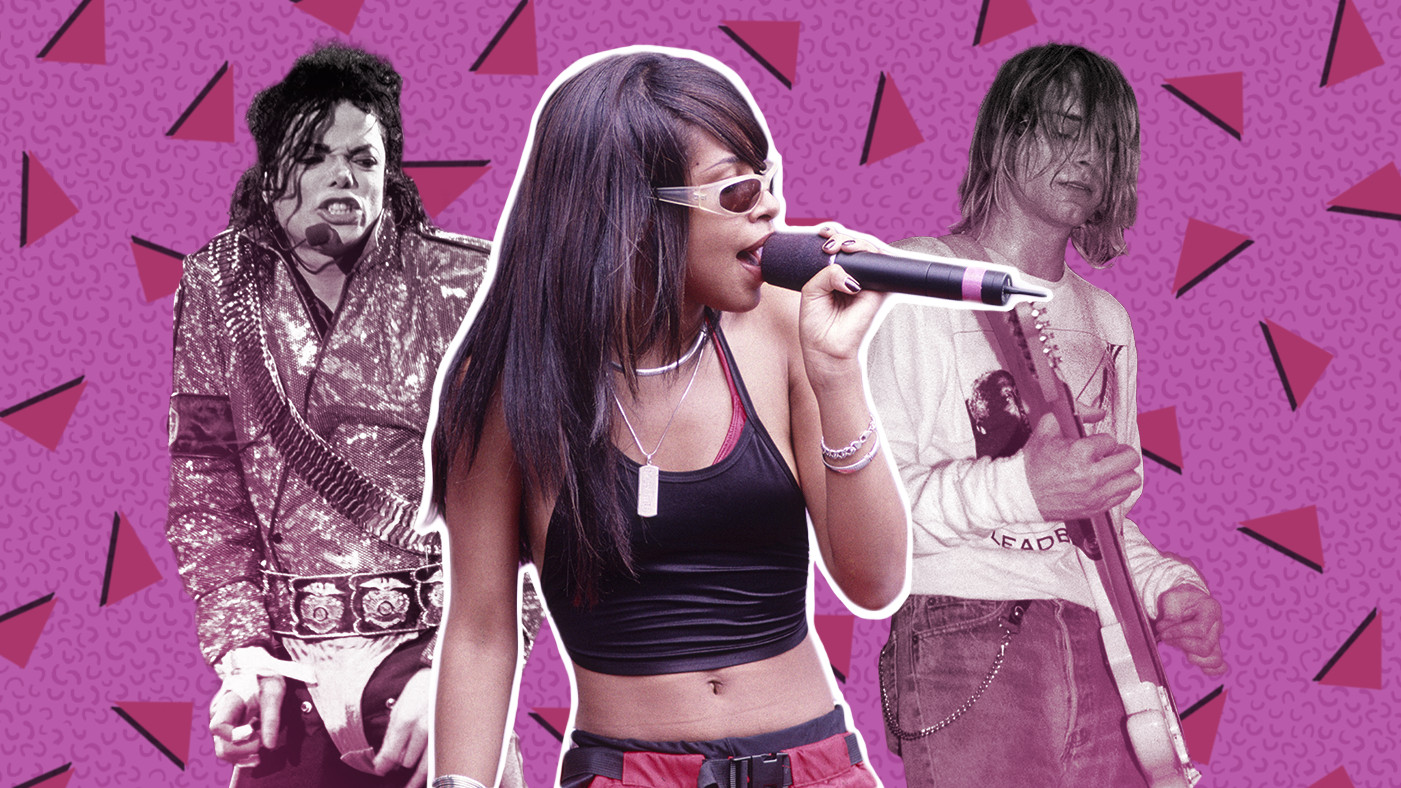 Selena performing live in concert, highlighting her iconic stage presence and vibrant energy as a Tejano music superstar in the 1990s.
Selena performing live in concert, highlighting her iconic stage presence and vibrant energy as a Tejano music superstar in the 1990s.
Silver Jews, “Random Rules” (1998)
Silver Jews’ “Random Rules” evokes the atmosphere of a late-night, dimly lit honky-tonk bar. David Berman’s distinctive, drawling vocals deliver fragmented, barstool philosophical musings, creating a uniquely captivating listening experience. This song represents the introspective and often quirky side of 90s alternative music, appealing to those who sought depth and lyrical complexity beyond the mainstream.
Lil Kim With Lil Cease, “Crush on You (Remix)” (1997)
“Crush on You (Remix)” by Lil Kim featuring Lil Cease is the quintessential Bad Boy Records anthem. Built around a hauntingly melancholic synth loop and featuring Lil Cease confidently stepping into Biggie’s shadow, the track is dominated by Lil Kim’s unshakeable confidence and bold persona, the Queen Bee herself. Her verses, boasting about her extravagant wig and fur collection, are iconic. The call-and-response, “Shall I proceed?” “Yes, indeed!” became an instantly recognizable and unforgettable moment in 90s hip-hop.
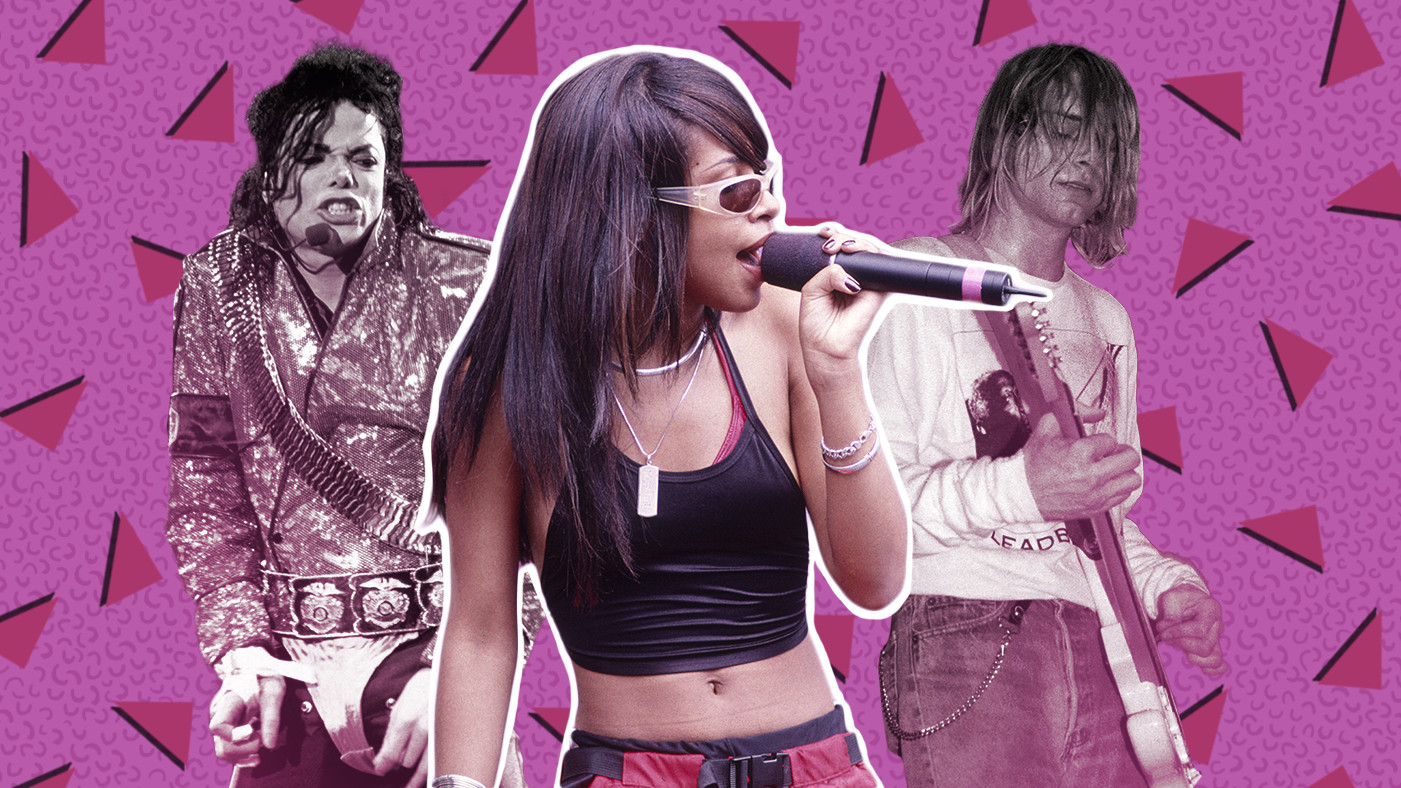 Lil' Kim performing on stage in the 90s, showcasing her signature bold fashion and confident persona as a leading female hip-hop artist.
Lil' Kim performing on stage in the 90s, showcasing her signature bold fashion and confident persona as a leading female hip-hop artist.
Stereolab, “Cybele’s Reverie” (1996)
Stereolab, the European masters of vintage-keyboard aesthetics, crafted album after album of their signature “lush agitprop trance-prog.” “Cybele’s Reverie” stands as their magnum opus, a perfect example of their unique sound. With its blend of hypnotic rhythms, French lyrics, and sophisticated instrumentation, the song encapsulates the experimental and intellectually stimulating side of 90s alternative music.
Supergrass, “Alright” (1995)
Choosing just one song from the Clueless soundtrack to represent 90s teen culture is a daunting task, but Supergrass’ “Alright” perfectly captures the youthful exuberance and carefree spirit of the era. This Britpop gem, with its infectious energy and optimistic lyrics, became an anthem for teenage life in the 90s, forever linked to the iconic film and its portrayal of Beverly Hills high school life.
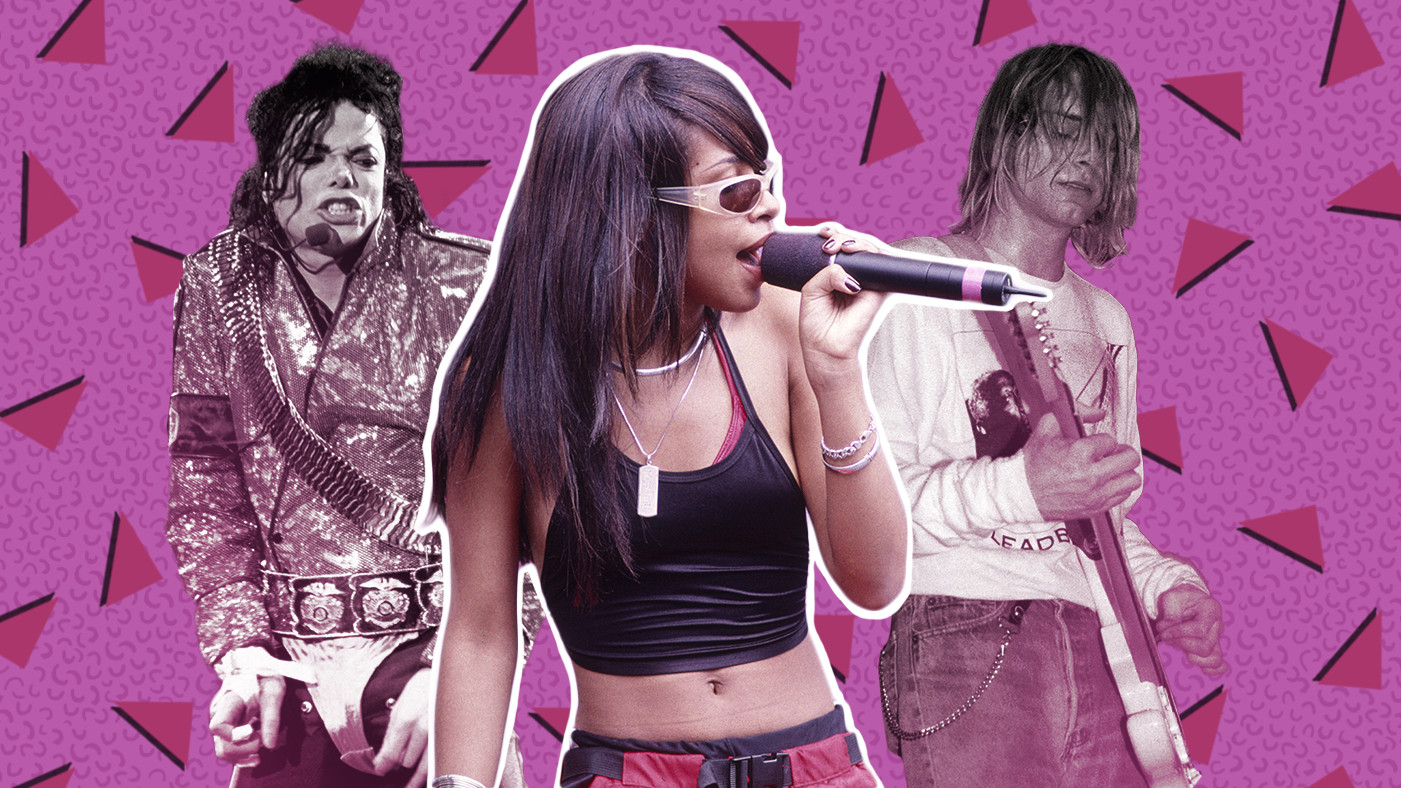 Supergrass band photo from the 90s, capturing their youthful energy and Britpop style that defined a part of the decade's music scene.
Supergrass band photo from the 90s, capturing their youthful energy and Britpop style that defined a part of the decade's music scene.
Ace of Base, “The Sign” (1994)
Ace of Base, the globally successful Swedish reggae-pop band, achieved massive international fame with “The Sign.” This mystical hit, with its slightly quirky English lyrics (“Life is demanding/Without understanding” – undeniably true!), became a worldwide phenomenon. It exemplified the surprising popularity of Swedish reggae-influenced pop music in the 90s, demonstrating the decade’s global musical reach.
Sophie B. Hawkins, “Damn I Wish I Was Your Lover” (1992)
Sophie B. Hawkins, the bohemian singer-songwriter, delivered a powerful and emotionally raw performance in “Damn I Wish I Was Your Lover.” Her passionate wails about unrequited longing resonated deeply with listeners. The strategically placed “damn” in the title and lyrics added an edge of vulnerability and intensity, making it a memorable and impactful hit of the early 90s.
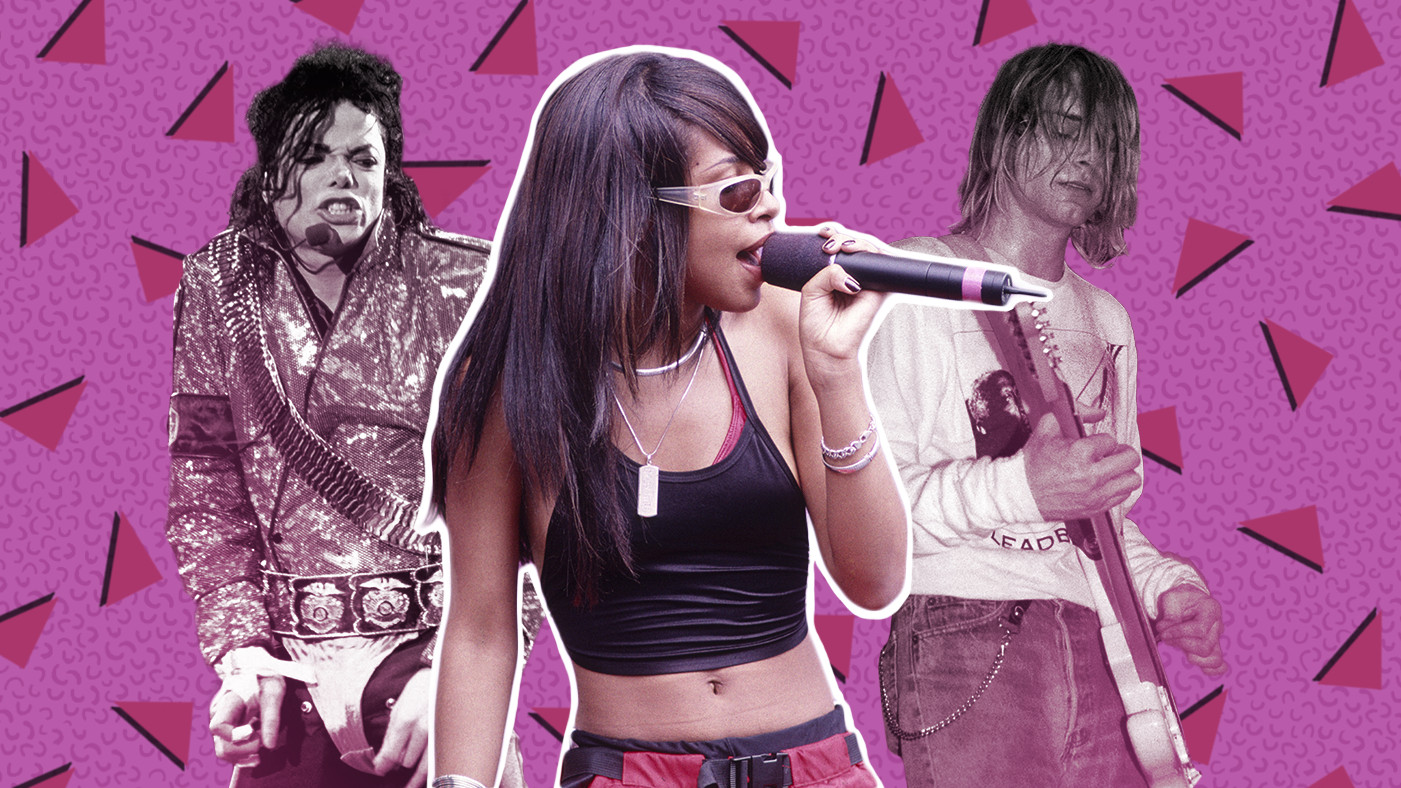 Sophie B. Hawkins in a promotional shot from the early 90s, portraying her bohemian style and singer-songwriter image.
Sophie B. Hawkins in a promotional shot from the early 90s, portraying her bohemian style and singer-songwriter image.
Big Pun Feat. Joe, “Still Not a Player” (1998)
Big Pun and Joe’s collaboration on “Still Not a Player” is a smooth and seductive Uptown anthem. The late, great Bronx MC, Big Pun, and R&B crooner Joe, joined forces over a mellow lovers-rock piano sample. The song is a masterclass in wooing “highly intelligent bachelorettes” with its blend of cultures (“boricua, morena“) and suggestive lyrics. “Still Not a Player” remains a testament to Big Pun’s lyrical prowess and his lasting impact on 90s hip-hop. R.I.P., Pun – he may not have been a player, but he definitely left a lasting impression.
Sebadoh, “Brand New Love” (1992)
Sebadoh’s “Brand New Love” marked a significant step towards vulnerability for the indie rock band. This folk-infused, feedback-laced ballad explores the daunting yet rewarding experience of opening oneself up to new emotions and connections. It captures the hesitant optimism of letting go of bitterness and embracing the possibility of love, a sentiment that resonated with the introspective mood of early 90s alternative rock.
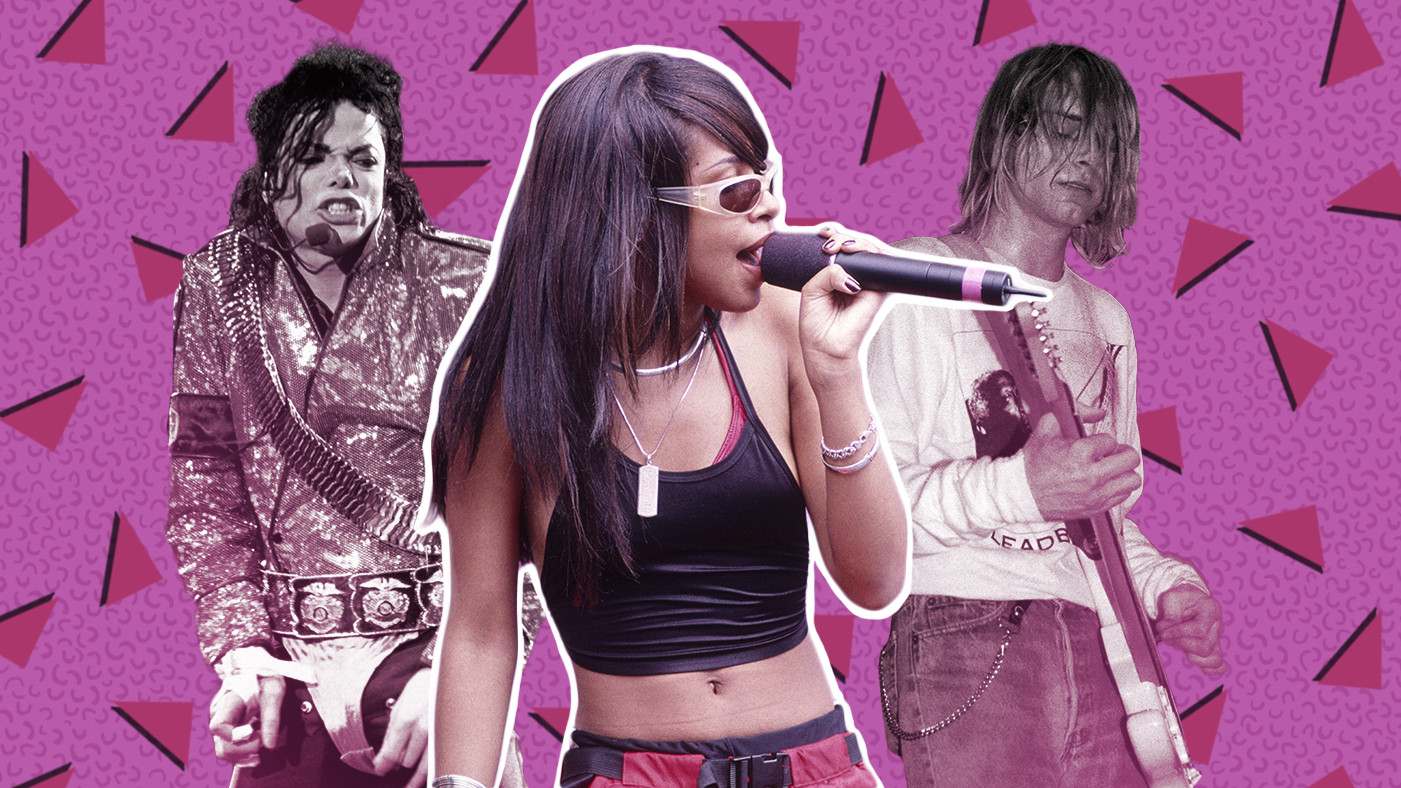 Sebadoh band members in a 90s photo, reflecting their indie rock aesthetic and lo-fi sound that was prominent in alternative music.
Sebadoh band members in a 90s photo, reflecting their indie rock aesthetic and lo-fi sound that was prominent in alternative music.
Geto Boys, “Mind Playing Tricks on Me” (1991)
“Mind Playing Tricks on Me” by Geto Boys is arguably the most chilling and psychologically complex gangsta rap narrative ever recorded. The song paints a vivid picture of paranoia and fear, culminating in Willie D’s visceral expression of despair, pounding his fists on concrete over a haunting jazz-fusion loop. It stands as a stark and powerful example of the socially conscious and often disturbing storytelling that emerged from 90s hip-hop.
New Radicals, “You Get What You Give” (1998)
New Radicals’ “You Get What You Give” is the epitome of a one-hit wonder, but what a hit it was! This gloriously anthemic track, perfect for proms and rebellions alike, came complete with a memorable bucket hat-wearing frontman in the music video and cheeky insults directed at Beck, Hanson, Courtney Love, and Marilyn Manson. Despite their brief time in the spotlight, the New Radicals left behind an enduring 90s anthem. Interestingly, the lead singer later found success as a songwriter and even received an Oscar nomination for Begin Again in 2015, although, sadly, he didn’t revive the bucket hat for the red carpet.
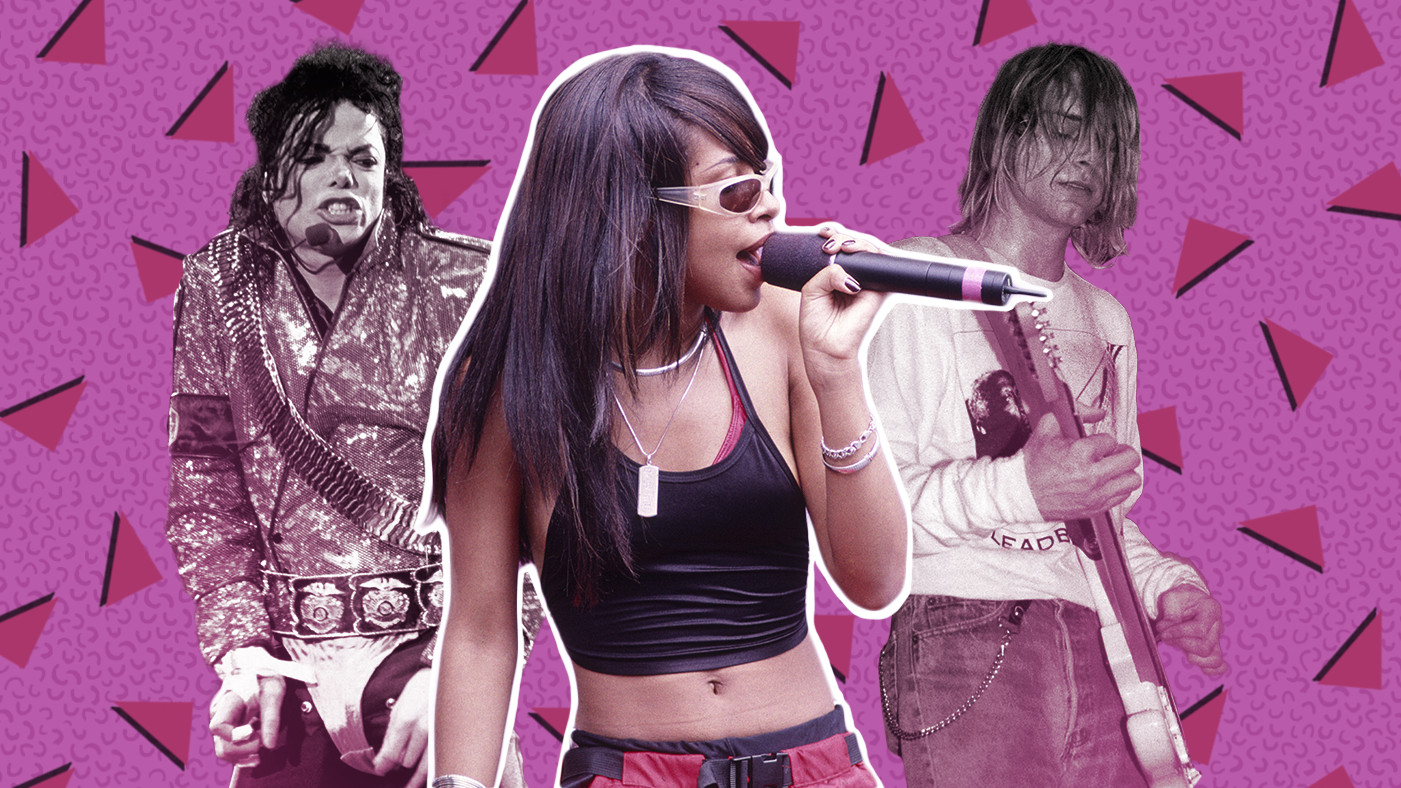 New Radicals lead singer Gregg Alexander in the music video for You Get What You Give, bucket hat and all, embodying the one-hit wonder era of 90s music.
New Radicals lead singer Gregg Alexander in the music video for You Get What You Give, bucket hat and all, embodying the one-hit wonder era of 90s music.
Portishead, “Glory Box” (1994)
Portishead’s “Glory Box” is the soundtrack to elegant trip-hop melancholy. Beth Gibbons’s haunting vocals perfectly complement the timeless, cheeba-infused Isaac Hayes sample from the 1970s, creating an atmosphere of smoky introspection. This iconic sample experienced a resurgence in 2015, brought back to the radio waves by Alessia Cara, demonstrating the enduring influence of Portishead and 90s trip-hop on contemporary music.
Sheryl Crow, “If It Makes You Happy” (1996)
Sheryl Crow captivated audiences with “If It Makes You Happy,” particularly with the relatable and slightly quirky line about “scraping the mold off the bread.” This lyric perfectly encapsulates the 90s slacker sensibility and a certain rock & roll stoner torpor. The song’s laid-back vibe and introspective lyrics made it a defining hit of the mid-90s alternative rock scene.
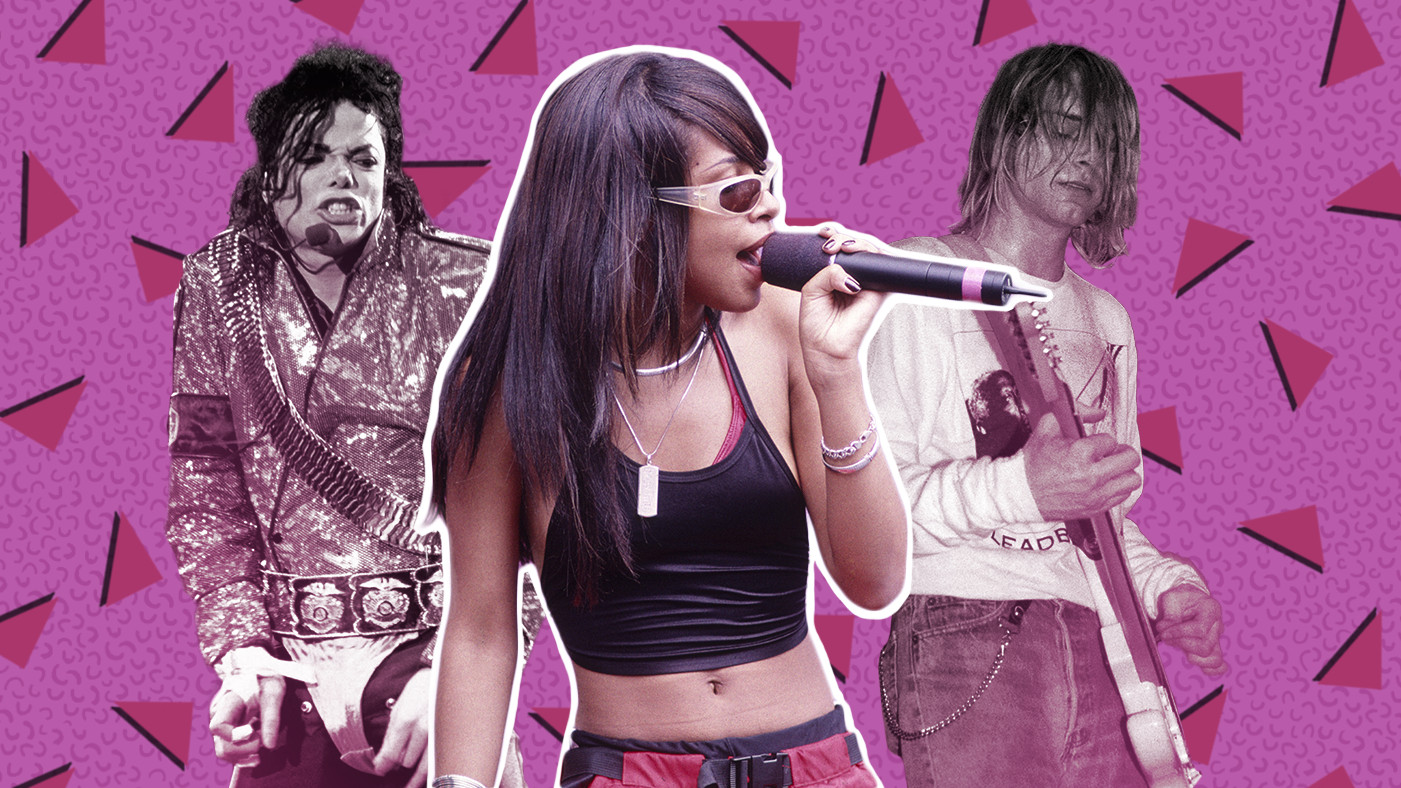 Sheryl Crow performing live in the 90s, showcasing her laid-back rockstar style and the energy of her live performances.
Sheryl Crow performing live in the 90s, showcasing her laid-back rockstar style and the energy of her live performances.
En Vogue, “Don’t Let Go (Love)” (1996)
En Vogue, the queens of funky R&B divas, delivered their steamiest slow jam with “Don’t Let Go (Love).” The song is a masterclass in lovemaking, heartbreak, and soul-shaking emotion. The standout moment: “If I could wear your clothes… I’d pretend I was you… and looooose controoool!” This hit solidified En Vogue’s place as one of the leading female vocal groups of the 90s and a defining voice in contemporary R&B.
Helium, “XXX” (1994)
Helium, fronted by guitar virtuoso Mary Timony (later of Wild Flag and Ex Hex), presented a deceptively sweet ballad with “XXX.” The song’s gentle melody belies its darkly humorous and assertive lyrics. Timony croons about lethal consequences for street harassment, declaring her guitar as her weapon. The song culminates with her guitar figuratively “killing” the harasser while she delivers deadpan kiss-off lines: “My heart is a cab…your love is a fad…and you’re a draaag!” It’s a unique and memorable track that showcased the sharp wit and musical prowess of Helium.
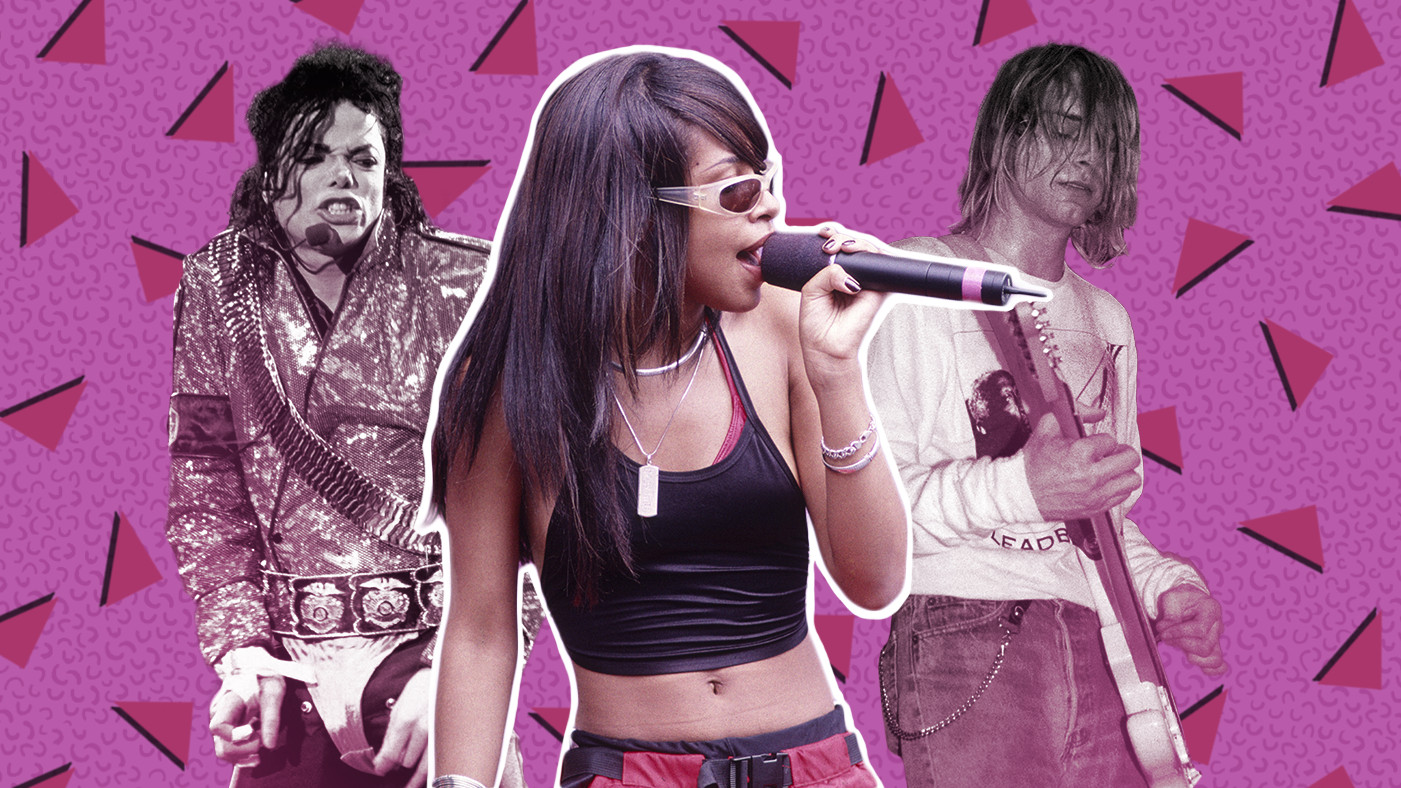 Mary Timony of Helium performing in the 90s, highlighting her guitar skills and the band's unique blend of indie rock and experimental sounds.
Mary Timony of Helium performing in the 90s, highlighting her guitar skills and the band's unique blend of indie rock and experimental sounds.
Foxy Brown With Jay Z, “I’ll Be” (1996)
Foxy Brown and Jay-Z’s collaboration on “I’ll Be” was a defining moment for both artists. Foxy Brown, declaring herself “2 live, nasty as I wanna be,” and Jay-Z, newly arrived on the scene with Reasonable Doubt, proved their combined star power. Jay-Z’s line, “Don’t shake your sassy ass in front of me,” is instantly iconic. This hit with his young protégé was just one of the many ways Jay-Z demonstrated his mastery of the hip-hop game, setting the stage for his decades-long reign at the top.
Underworld, “Born Slippy .Nuxx” (1996)
Underworld’s “Born Slippy .Nuxx” is a sonic explosion of techno sensory overload. Its inclusion in the культовый film Trainspotting catapulted it to mainstream popularity, particularly the unforgettable “lager lager lager lager” chant. However, the song’s intense and frenetic energy suggests that lager might be one of the tamer substances involved in its creation. “Born Slippy .Nuxx” became an anthem for the 90s rave scene and a defining track of electronic music’s breakthrough into popular culture.
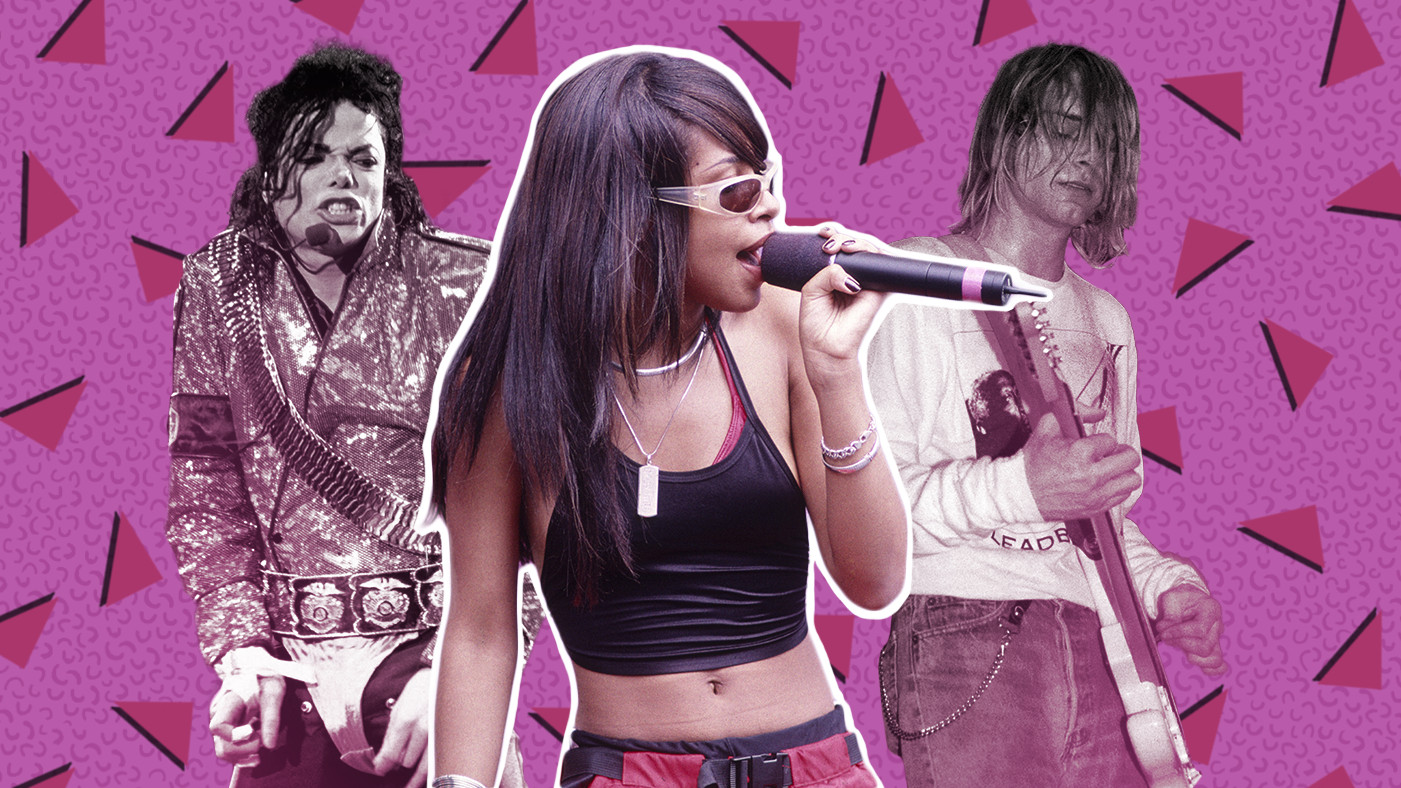 Underworld performing live in the 90s, capturing the energy of their electronic music performances and the rave culture that embraced their sound.
Underworld performing live in the 90s, capturing the energy of their electronic music performances and the rave culture that embraced their sound.
Sir Mix-A-Lot, “Baby Got Back” (1992)
“Baby Got Back” by Sir Mix-A-Lot is, well, all about the butt. This pro-curves manifesto became a cultural phenomenon, with practically everyone in the English-speaking world able to quote lines from this unapologetically body-positive anthem. Its infectious beat and humorous lyrics made it a ubiquitous and unforgettable hit of the early 90s, sparking conversations about body image and representation in popular culture.
Fiona Apple, “Paper Bag” (1999)
Fiona Apple’s “Paper Bag” is a poignant and relatable tale of romantic disillusionment. The simple yet powerful line, “He thought he was a man, but he was just a little boy,” encapsulates the song’s central theme. Apple’s raw vocals and introspective lyrics resonated with listeners, making “Paper Bag” a standout hit from her critically acclaimed album When the Pawn….
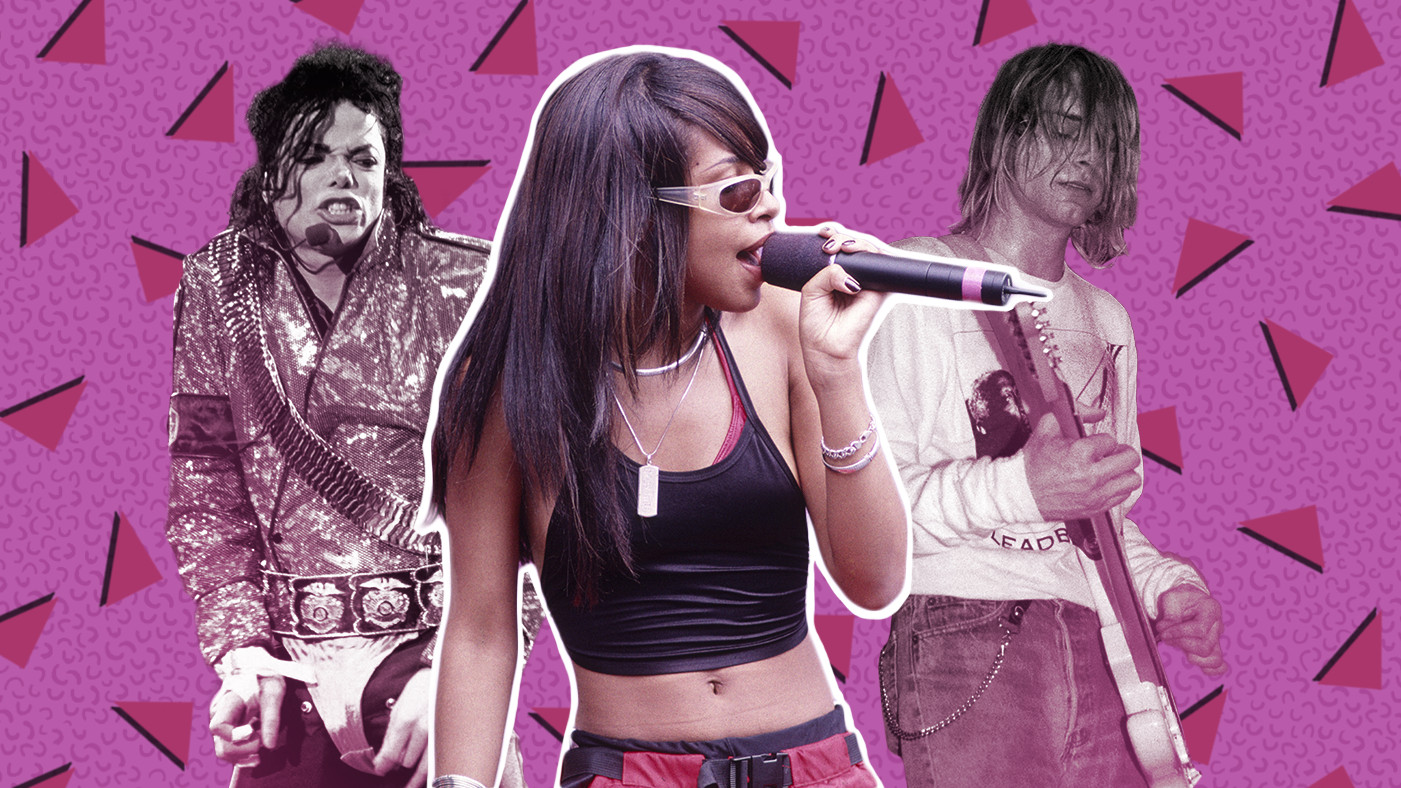 Fiona Apple in a 90s era photo, portraying her introspective artist persona and the alternative singer-songwriter aesthetic of the decade.
Fiona Apple in a 90s era photo, portraying her introspective artist persona and the alternative singer-songwriter aesthetic of the decade.
Weezer, “Pink Triangle” (1996)
Years before “overshare” became a common term, Weezer’s Rivers Cuomo took lyrical oversharing to a new level with “Pink Triangle.” This love song, the very definition of straight-dude cluelessness, explores themes of miscommunication and unrequited affection. The self-deprecating humor and catchy melody made it a beloved track from Pinkerton, even if Cuomo’s self-comparison to Nirvana might be a bit of a stretch.
Daft Punk, “Around the World” (1997)
Daft Punk, the enigmatic French techno robots, took the iconic Chic “Good Times” bassline on a futuristic journey with “Around the World.” This track, with its repetitive yet hypnotic title and filter-house sound, launched countless imitators and solidified Daft Punk’s status as pioneers of electronic music. The song’s minimalist approach and infectious groove made it a global dancefloor anthem and a defining sound of late 90s electronic music.
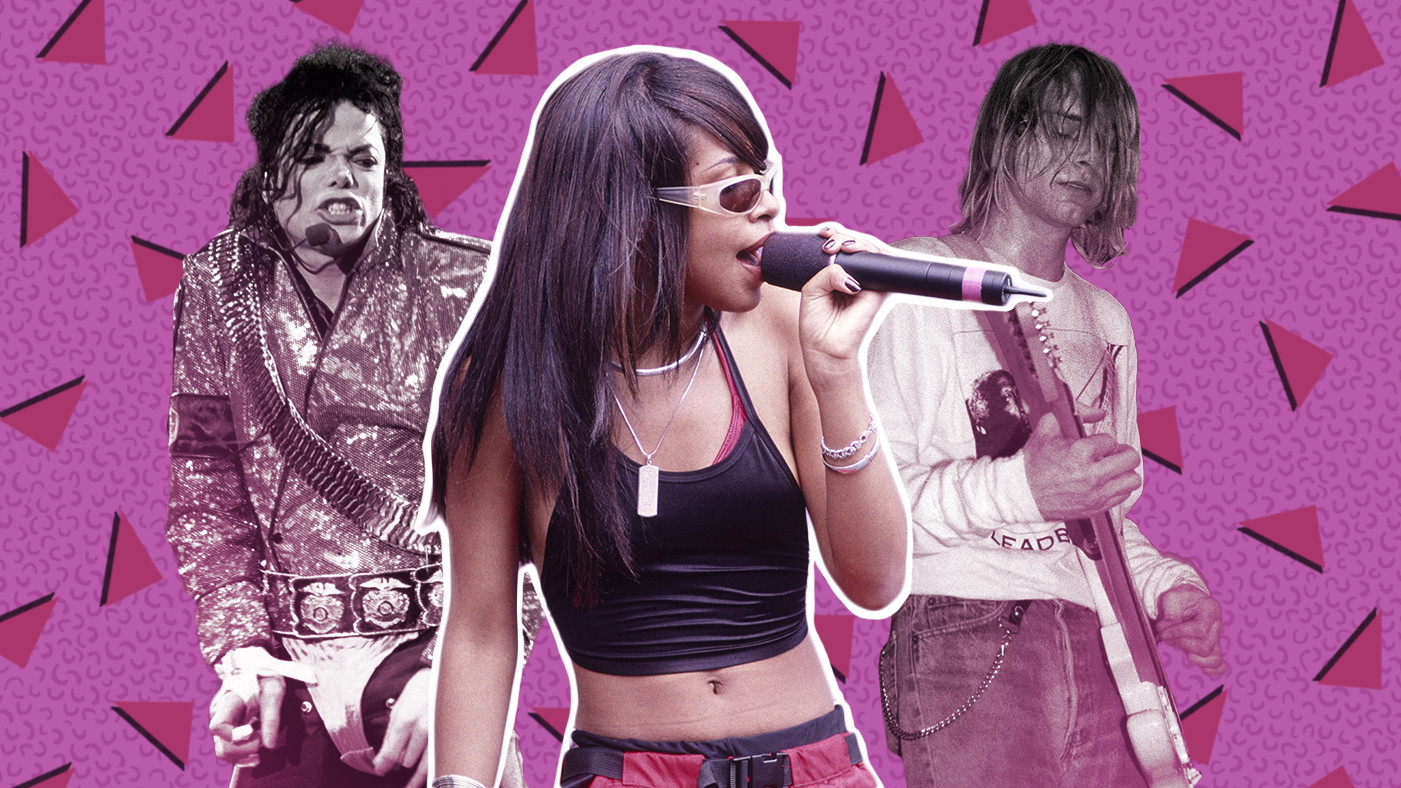 Daft Punk in their iconic robot helmets, a defining visual of 90s electronic music and their futuristic sound.
Daft Punk in their iconic robot helmets, a defining visual of 90s electronic music and their futuristic sound.
Natalie Imbruglia, “Torn” (1998)
There’s karaoke, and then there’s “Torn” karaoke. Natalie Imbruglia’s rendition of “Torn” became a karaoke staple, particularly in the summer of 1998, often considered the golden age of karaoke hits. “Torn” remains an emotionally charged tear-jerker, even though knowing about Natalie Imbruglia’s celebrity romances might make you question whether she truly needs anyone’s shoulder to cry on. Regardless, the song’s enduring popularity speaks to its powerful emotional resonance.
Harvey Danger, “Flagpole Sitta” (1998)
Just like “Torn,” Harvey Danger’s “Flagpole Sitta” also occupies a special place in karaoke history. The lyrics, “I wanna publish zines and rage against machines,” perfectly encapsulate the 90s zeitgeist. The line, “I don’t even own a TV,” is a quintessential example of hipster pronouncements that quickly became outdated as the decade drew to a close. “Flagpole Sitta” remains a witty and insightful snapshot of 90s alternative culture.
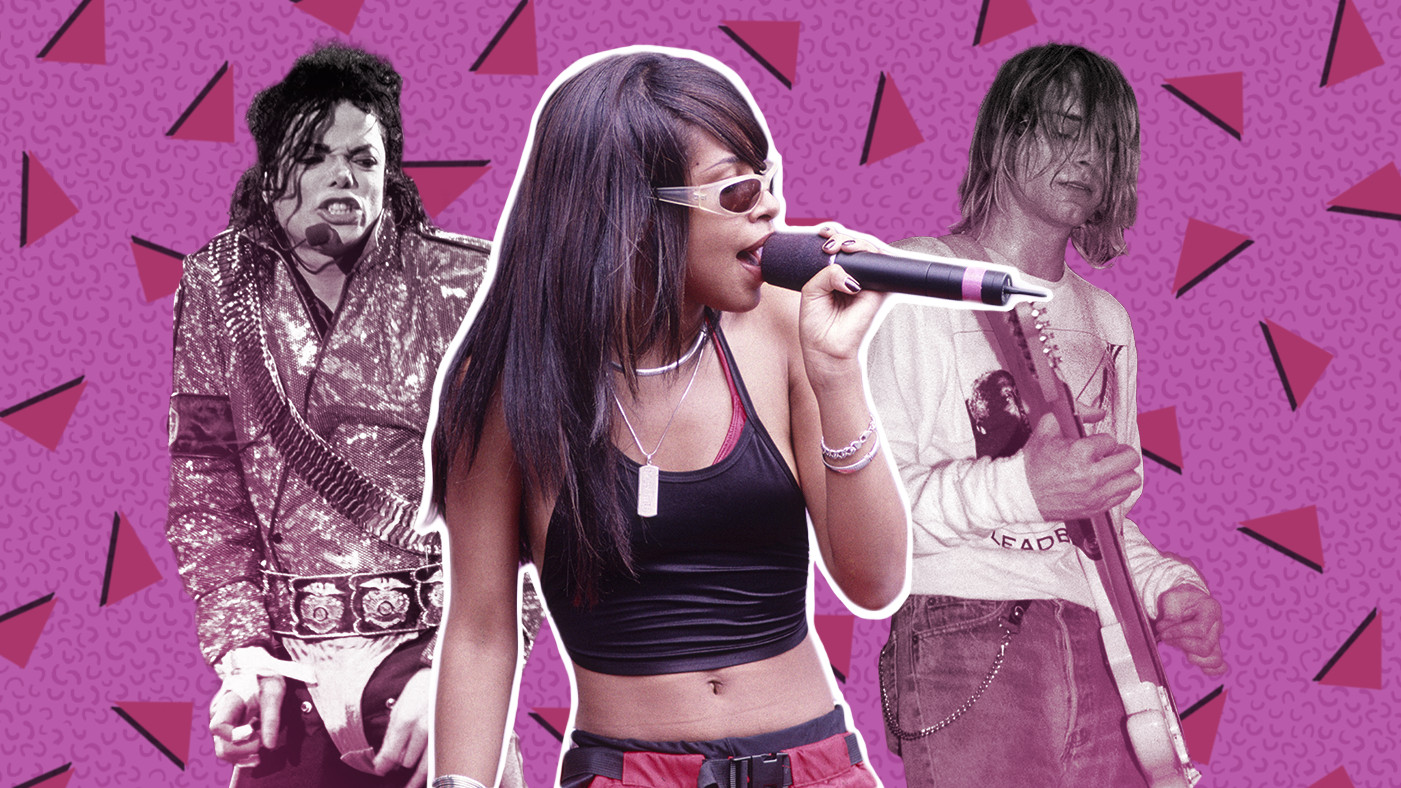 Harvey Danger band members in a 90s promotional photo, reflecting their alternative rock image and the ironic humor of their hit song Flagpole Sitta.
Harvey Danger band members in a 90s promotional photo, reflecting their alternative rock image and the ironic humor of their hit song Flagpole Sitta.
Aaliyah, “Are You That Somebody” (1998)
“Are You That Somebody” by Aaliyah is a groundbreaking collaboration with Timbaland, showcasing his most avant-garde production style. Despite the unconventional beat, Aaliyah effortlessly transforms it into a bonafide pop hit with her signature cool and ethereal vocals. The song’s innovative sound and Aaliyah’s captivating performance solidified her status as a rising star in 90s R&B and a trendsetter in contemporary music.
Oasis, “Wonderwall” (1995)
Noel Gallagher himself admitted he had no idea what a “wonderwall” actually was. And honestly, neither did anyone else. But it didn’t matter then, and it certainly doesn’t matter now. Oasis’ “Wonderwall” possesses an undeniable anthemic quality, capable of turning any room into a boisterous, if slightly out-of-tune, pub singalong. This Britpop classic remains one of the most beloved and enduring hits of the 90s, transcending lyrical ambiguity with sheer musical magnetism.
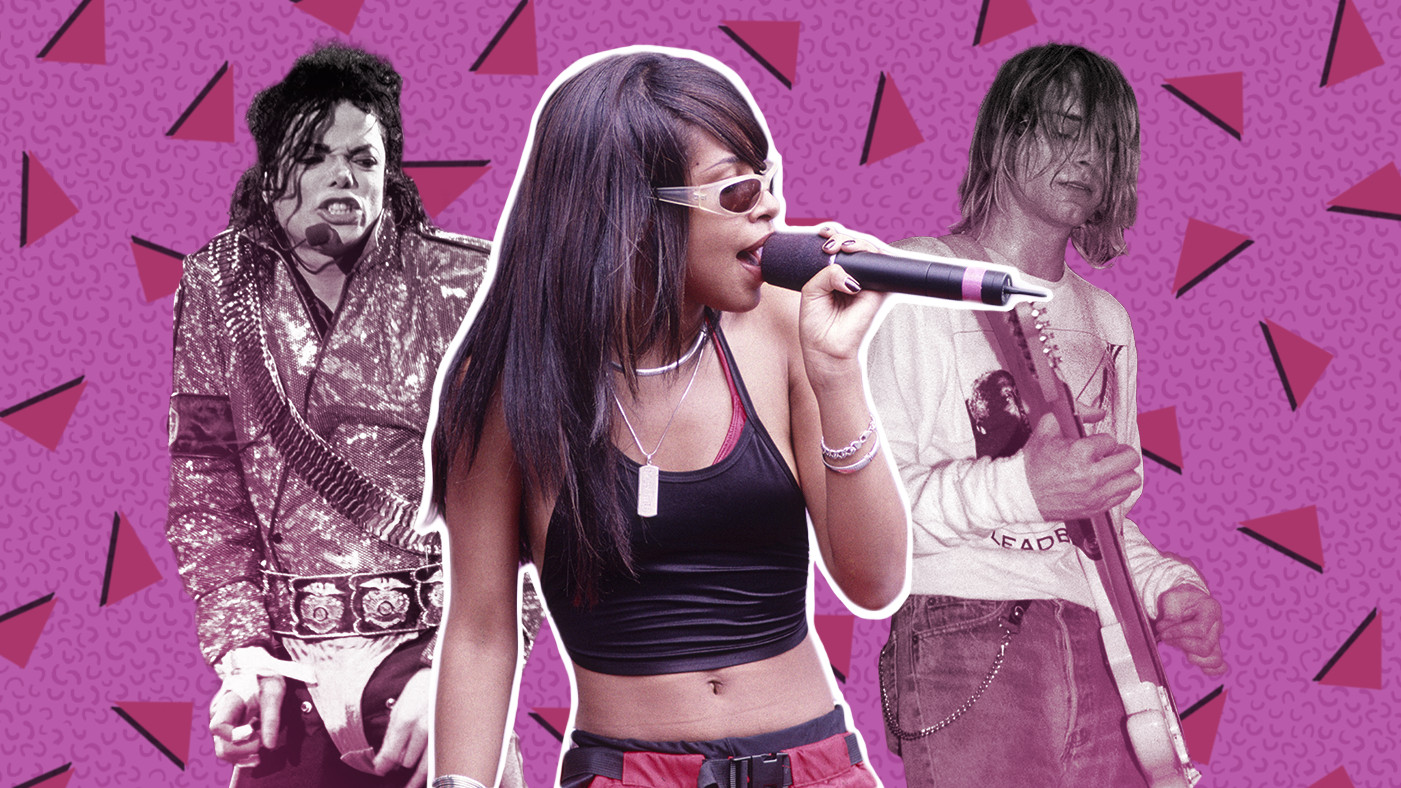 Oasis brothers Liam and Noel Gallagher in the 90s, capturing their Britpop star image and the anthemic rock sound of Wonderwall.
Oasis brothers Liam and Noel Gallagher in the 90s, capturing their Britpop star image and the anthemic rock sound of Wonderwall.
Mobb Deep, “Shook Ones Pt. II” (1995)
Mobb Deep’s “Shook Ones Pt. II” is often described as the hip-hop equivalent of The Rolling Stones’ “Gimme Shelter.” This track, from the Queensbridge duo Prodigy and Havoc, provides a stark and unflinching report from the harsh realities of urban life. In their world, vulnerability, even a fleeting moment of fear, can be fatal because “there ain’t no such thing as halfway crooks.” Mobb Deep were considered among the grittiest and most authentic voices of the mid-90s East Coast hip-hop scene, and their signature hit remains as chilling and impactful today as it was upon its release.
Smashing Pumpkins, “1979” (1995)
Billy Corgan’s “1979” is an evocative ode to the bittersweet pangs of a generic suburban Midwestern adolescent summer. Built around James Iha’s shimmering guitar riff, the song possesses a universal appeal that transcended even those who typically disliked Corgan’s musical style. Famously covered by Pavement, a band often seen as Corgan’s stylistic opposite, “1979” is a testament to its undeniable brilliance. The lyrics, “Faster than the speed of sound, faster than we thought we’d go,” perfectly capture the fleeting and transformative nature of youth.
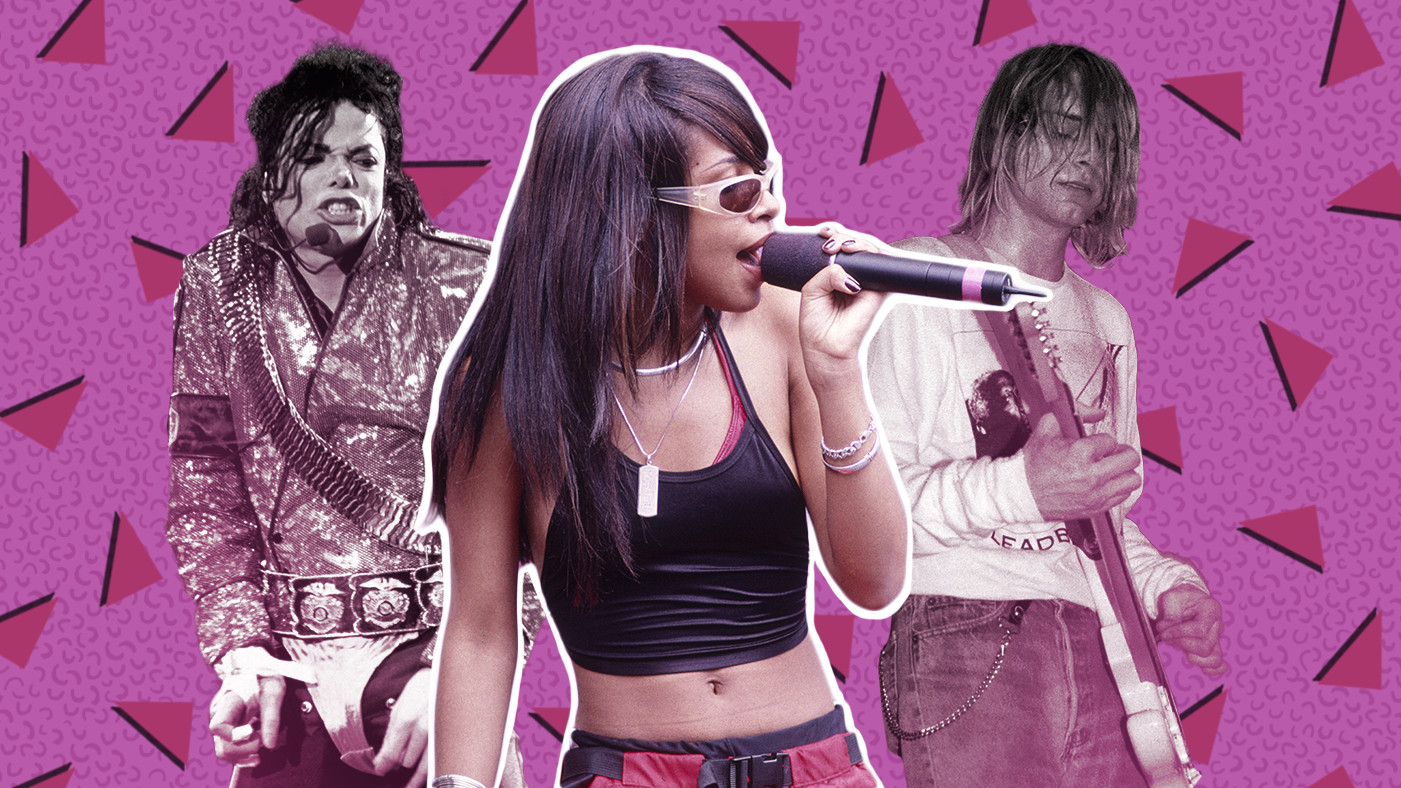 Billy Corgan of Smashing Pumpkins in the 90s, showcasing his iconic look and the alternative rock dominance of the band during that decade.
Billy Corgan of Smashing Pumpkins in the 90s, showcasing his iconic look and the alternative rock dominance of the band during that decade.
Beck, “Loser” (1993)
Beck emerged as a poetic voice of his generation, and the 90s were certainly overflowing with those. With “Loser,” Beck arrived with a unique and genre-bending sound, blending blues licks, beatboxing, and even a leaf blower. The music video, playfully violating George Lucas’ copyrights, further cemented his quirky and irreverent persona. “Loser” became an anthem for a generation embracing irony and unconventionality, a true 90s original.
Whitney Houston Feat. Faith Evans and Kelly Price, “Heartbreak Hotel” (1998)
Whitney Houston, joined by Faith Evans and Kelly Price, delivered a powerful kiss-off anthem with “Heartbreak Hotel.” Whitney’s vocal performance builds from subtle whispers to soaring high notes, a masterful display of vocal control and emotional release. At the time, it felt like the beginning of a new and exciting chapter for Whitney. Sadly, it turned out to be closer to the end of her remarkable story, making the song even more poignant in retrospect.
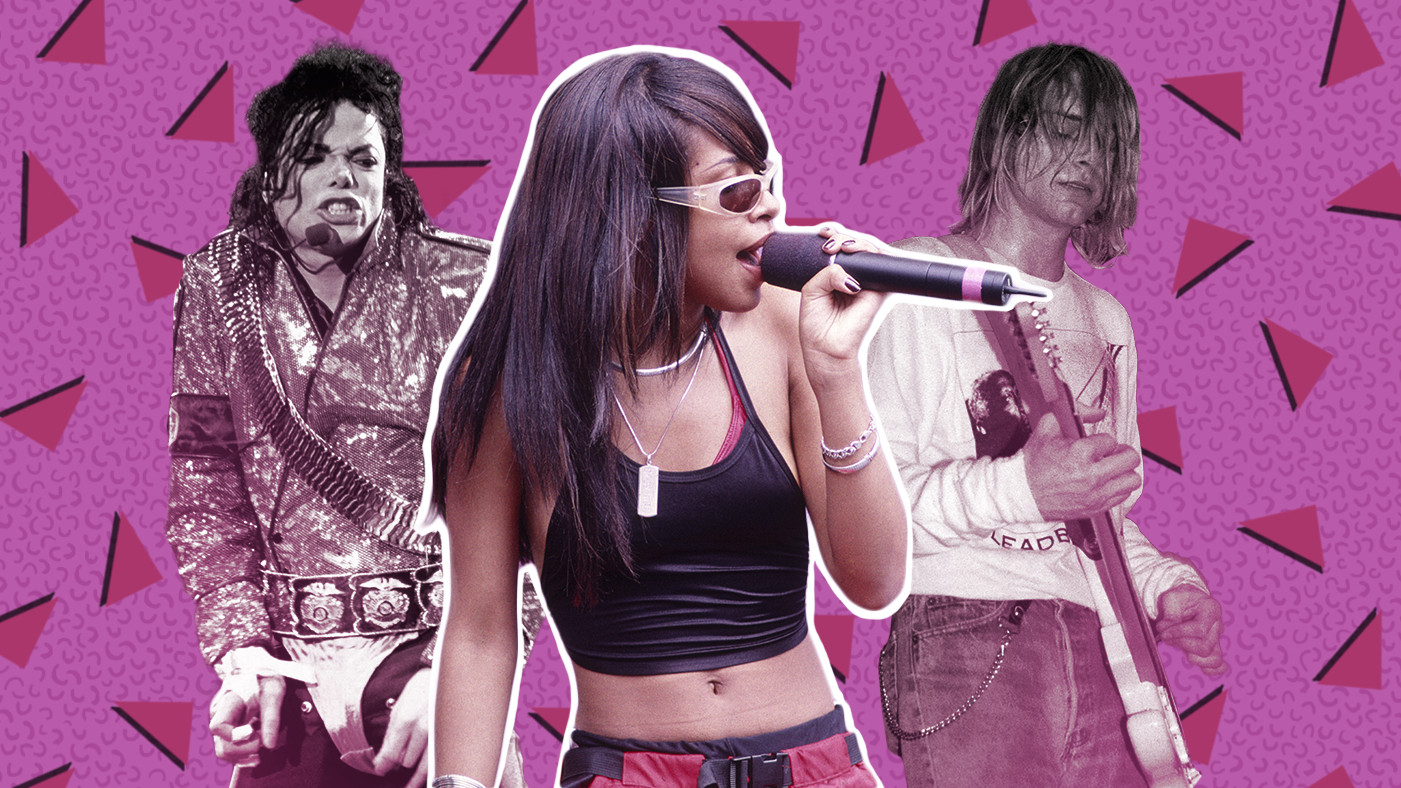 Whitney Houston in a glamorous 90s photo, showcasing her diva image and powerful vocal presence that defined the decade's pop and R&B scene.
Whitney Houston in a glamorous 90s photo, showcasing her diva image and powerful vocal presence that defined the decade's pop and R&B scene.
Garbage, “Queer” (1995)
Garbage, fronted by Shirley Manson and featuring alt-rock superproducer Butch Vig, unleashed “Queer.” Shirley Manson’s distinctive, eerie vocals combined with Vig’s signature studio polish create a captivating and unsettling atmosphere. Her whispered lyrics, “You can touch me if you want/But you can’t stop,” are both seductive and slightly menacing, getting under your skin and staying there. “Queer” exemplified the darker, more industrial-tinged side of 90s alternative rock.
Beastie Boys, “Sure Shot” (1994)
The Beastie Boys, with their signature blend of humor and hip-hop innovation, showcased their lyrical dexterity on “Sure Shot.” Adam Yauch’s shout-out, “to all the mothers and the sisters and the wives and friends,” is a testament to their inclusive and socially conscious approach. “Sure Shot” is a classic Beastie Boys track, demonstrating why “you can’t, you won’t and you don’t stop” when it comes to their enduring musical legacy.
 Beastie Boys in a 90s photo, showcasing their iconic style and the hip-hop energy that made them legends of the decade.
Beastie Boys in a 90s photo, showcasing their iconic style and the hip-hop energy that made them legends of the decade.
Sleater-Kinney, “Get Up” (1999)
Sleater-Kinney, the fierce goddesses of Portland punk rock, captured the feeling of isolation and defiance in “Get Up.” This song, with its raw energy and empowering message, is an anthem for refusing to surrender even when feeling lost. The guitars, sounding like “a bucket of stars dumped into the universe,” add to the song’s explosive and cathartic impact. “Get Up” exemplifies the powerful and politically charged riot grrrl movement that shaped a significant part of 90s alternative music.
Outkast, “Rosa Parks” (1998)
Outkast’s “Rosa Parks” is more than just a song; it’s a cultural phenomenon. This Dirty South booty-shaking anthem became the funky bus jam of the decade, complete with a harmonica solo that rivals even Blues Traveler. “Rosa Parks” introduced much of the country to the unique sound brewing in Atlanta’s “dirty-dirty ATLien nation,” courtesy of Big Boi and André 3000. It’s also where many listeners first encountered the word “crunk.” And to this day, “Rosa Parks” still sounds utterly and gloriously insane.
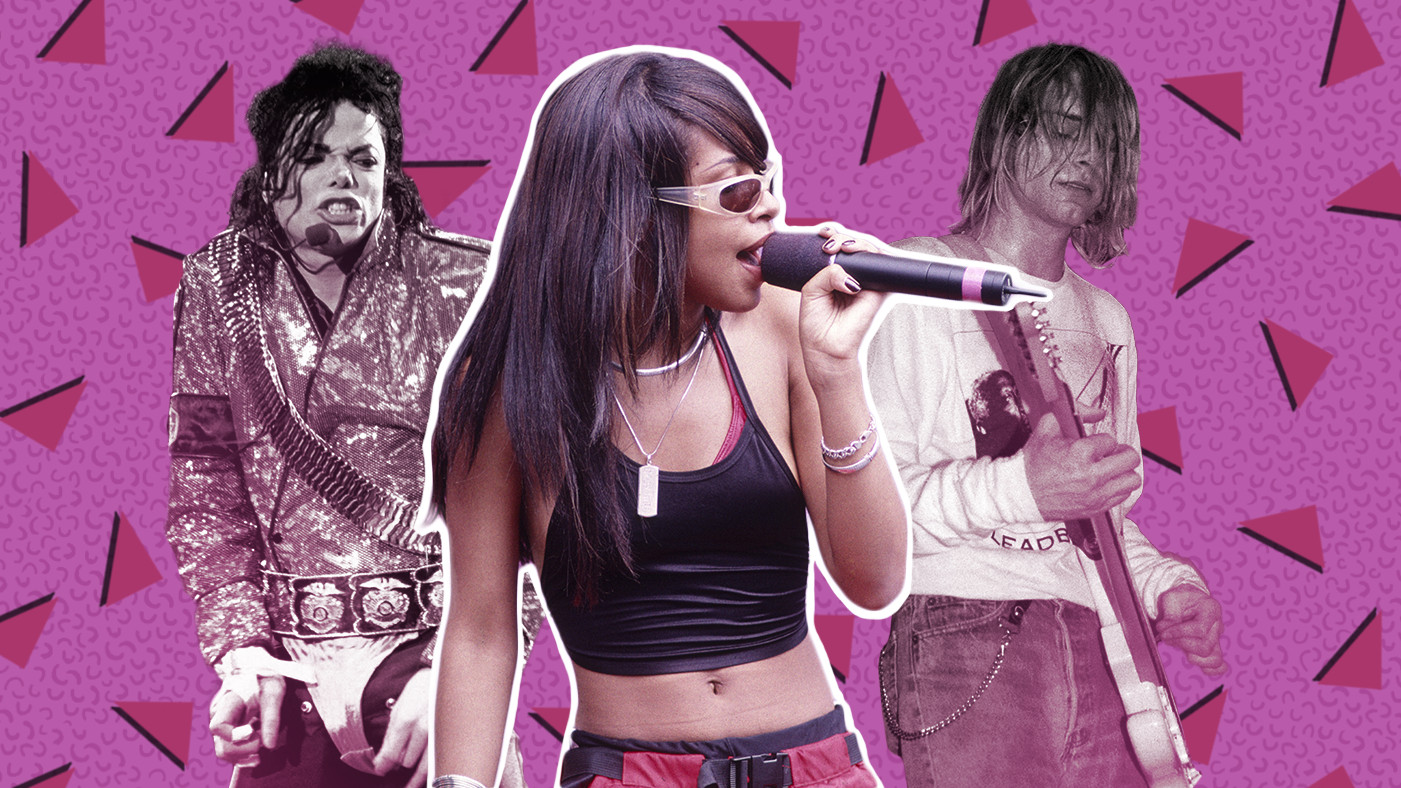 Outkast duo Andre 3000 and Big Boi in a 90s photo, representing the innovative and Southern hip-hop sound that defined a part of the decade.
Outkast duo Andre 3000 and Big Boi in a 90s photo, representing the innovative and Southern hip-hop sound that defined a part of the decade.
R.E.M. “Nightswimming” (1992)
Back in 1989, predicting R.E.M.’s continued success into the 90s might have seemed uncertain. However, the band went on to release a string of stone-cold classic albums throughout the decade. “Nightswimming,” from Automatic for the People, is a bittersweet piano-driven reverie about skinny-dipping in the Georgia pines. Michael Stipe’s poignant lyrics express a desire to hold onto cherished memories before they fade away, replaced by the mundane realities of everyday life. It’s a beautiful and melancholic reflection on nostalgia and the passage of time.
Ol’ Dirty Bastard, “Brooklyn Zoo” (1995)
The Wu-Tang Clan universe was built on complex album-length concepts, but Ol’ Dirty Bastard’s “Brooklyn Zoo” was their most direct and hilarious shot at radio airplay. ODB, aka Big Baby Jesus, unleashes his chaotic energy all over RZA’s fractured piano keys, creating a truly unique and unforgettable track. “Brooklyn Zoo” is proof that Wu-Tang, in their own inimitable way, truly is “for the children.”
 Ol' Dirty Bastard of Wu-Tang Clan in a 90s photo, showcasing his wild and unpredictable persona, a key figure in the decade's hip-hop scene.
Ol' Dirty Bastard of Wu-Tang Clan in a 90s photo, showcasing his wild and unpredictable persona, a key figure in the decade's hip-hop scene.
The Breeders, “Cannonball” (1993)
Kim Deal, emerging from the ashes of alt-rock icons Pixies, formed The Breeders with her twin sister Kelley. “Cannonball” is a freewheeling, shaggy-headed, big-hearted mess of a song that became one of the weirdest and most wonderful radio hits of the 90s, or any decade for that matter. Its unconventional structure, catchy chorus, and playful energy made it an instant alt-rock classic and a testament to Kim Deal’s unique songwriting talent.
Hole, “Doll Parts” (1994)
“Doll Parts” is arguably Courtney Love’s finest musical moment. The song’s raw emotion and vulnerability are palpable. It’s the kind of song that captures a deep ache, a feeling of longing and fragility. As the original article suggests, it’s a song that resonates with profound personal pain, the kind of ache that can linger and resurface over time. “Doll Parts” remains a powerful and enduring example of Courtney Love’s songwriting and Hole’s impact on 90s alternative rock.
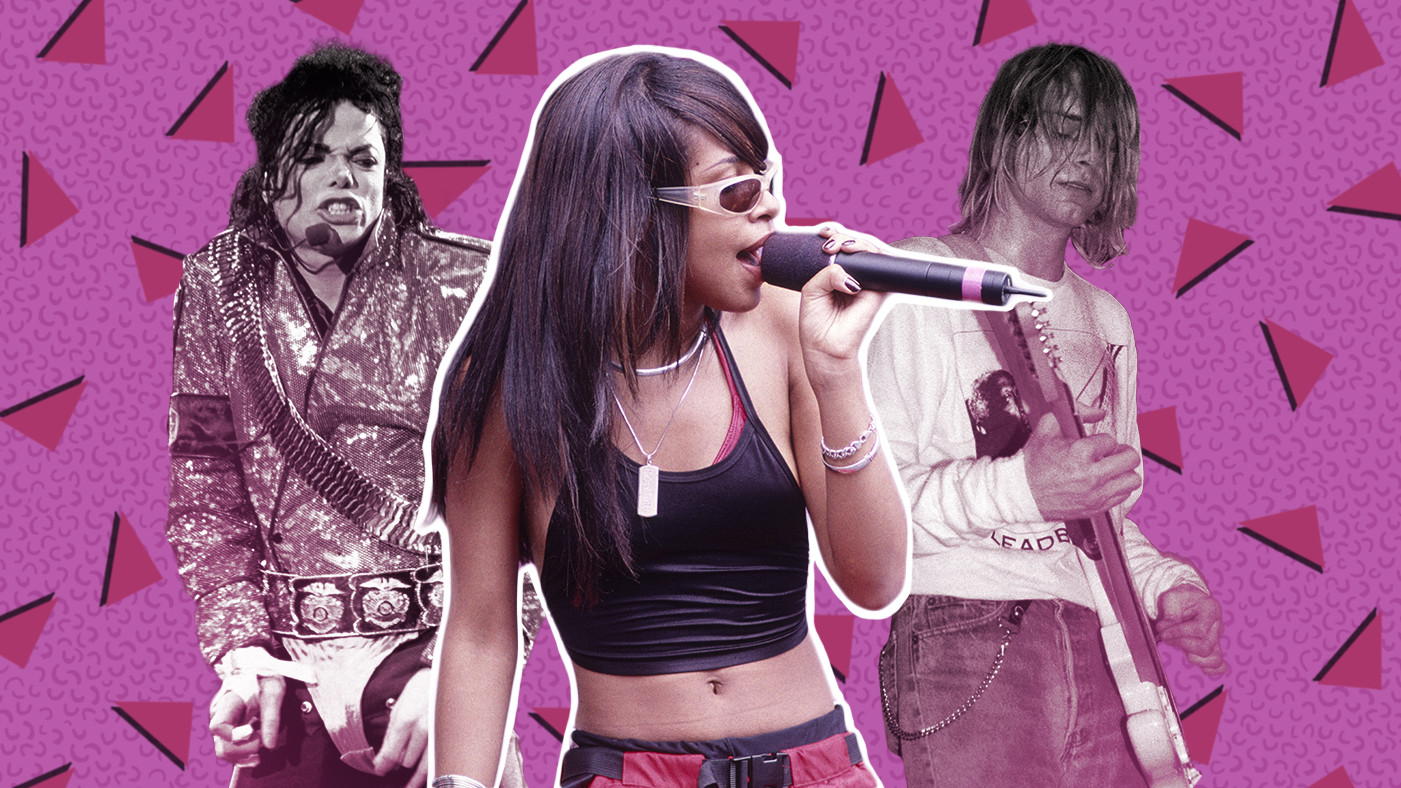 Courtney Love of Hole performing in the 90s, embodying the grunge and riot grrrl energy of the decade's alternative rock scene.
Courtney Love of Hole performing in the 90s, embodying the grunge and riot grrrl energy of the decade's alternative rock scene.
TLC, “No Scrubs” (1999)
TLC, the queens of crazy-sexy-cool R&B, closed out the decade they dominated with the hilarious and empowering “No Scrubs.” This anthem takes direct aim at undesirable suitors, addressing street harassment and much more. “No Scrubs” became a defining feminist anthem of the late 90s and a testament to TLC’s sharp wit and social commentary. Rest in peace, Left Eye, your influence continues to burn brightly.
Liz Phair, “Fuck and Run” (1993)
Believe it or not, people in 1993 thought they had problems too. Liz Phair, with her unflinchingly honest lyrics and understated delivery, testified about disposable relationships in “Fuck and Run.” Her plainspoken vocals and relatable lyrics resonated deeply, highlighting a unfortunately timeless narrative. The song’s central theme, “Boys only want love if it’s torture,” sadly remains relevant even today, underscoring the cyclical nature of certain relationship dynamics.
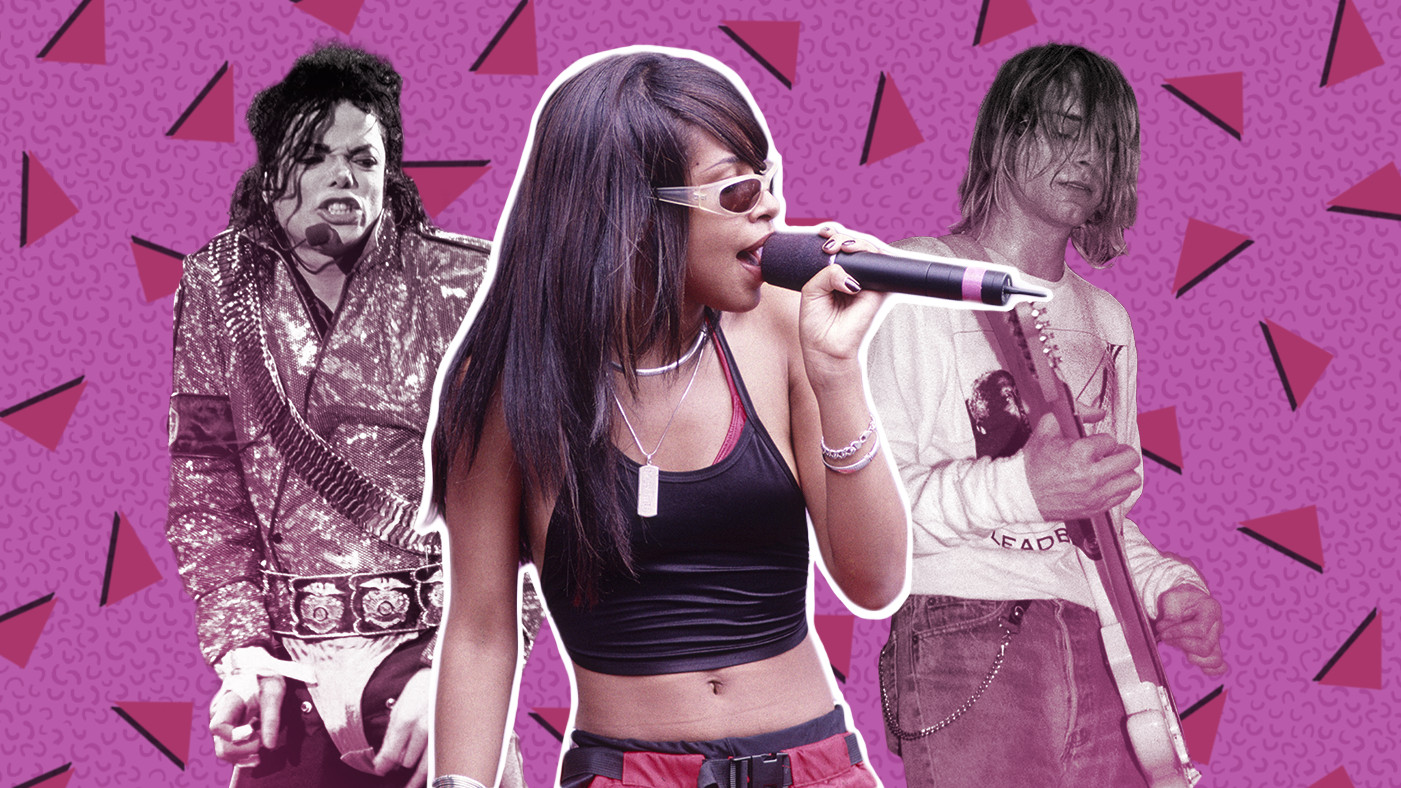 Liz Phair in a 90s photo, showcasing her indie rock artist image and the raw honesty of her songwriting during that era.
Liz Phair in a 90s photo, showcasing her indie rock artist image and the raw honesty of her songwriting during that era.
Pulp, “Common People” (1995)
Jarvis Cocker, the charismatic frontman of Pulp, exudes more soul and swagger with a single puff of smoke than many singers manage in their entire careers. “Common People” is a Britpop masterpiece, brimming with sex, sarcasm, and a touch of despair, though primarily focused on the complexities of class and desire. It’s a witty, insightful, and undeniably catchy anthem that solidified Pulp’s place in Britpop history and Jarvis Cocker’s status as a cultural icon.
Missy “Misdemeanor” Elliott, ”The Rain (Supa Dupa Fly)” (1997)
“The Rain (Supa Dupa Fly)” marked the arrival of Missy Elliott and Timbaland, the duo who arguably defined the sound of late 90s and early 2000s hip-hop and R&B. Together, they transformed a 70s R&B sample into a steamy, Southern-infused night, complete with crickets chirping and ominous storm clouds gathering. Missy’s innovative flow and Timbaland’s groundbreaking production created a sound that was both futuristic and deeply rooted in R&B tradition. “Oh, Missy, try to maintain,” indeed – but her and Timbaland’s impact on music is undeniable and far from contained.
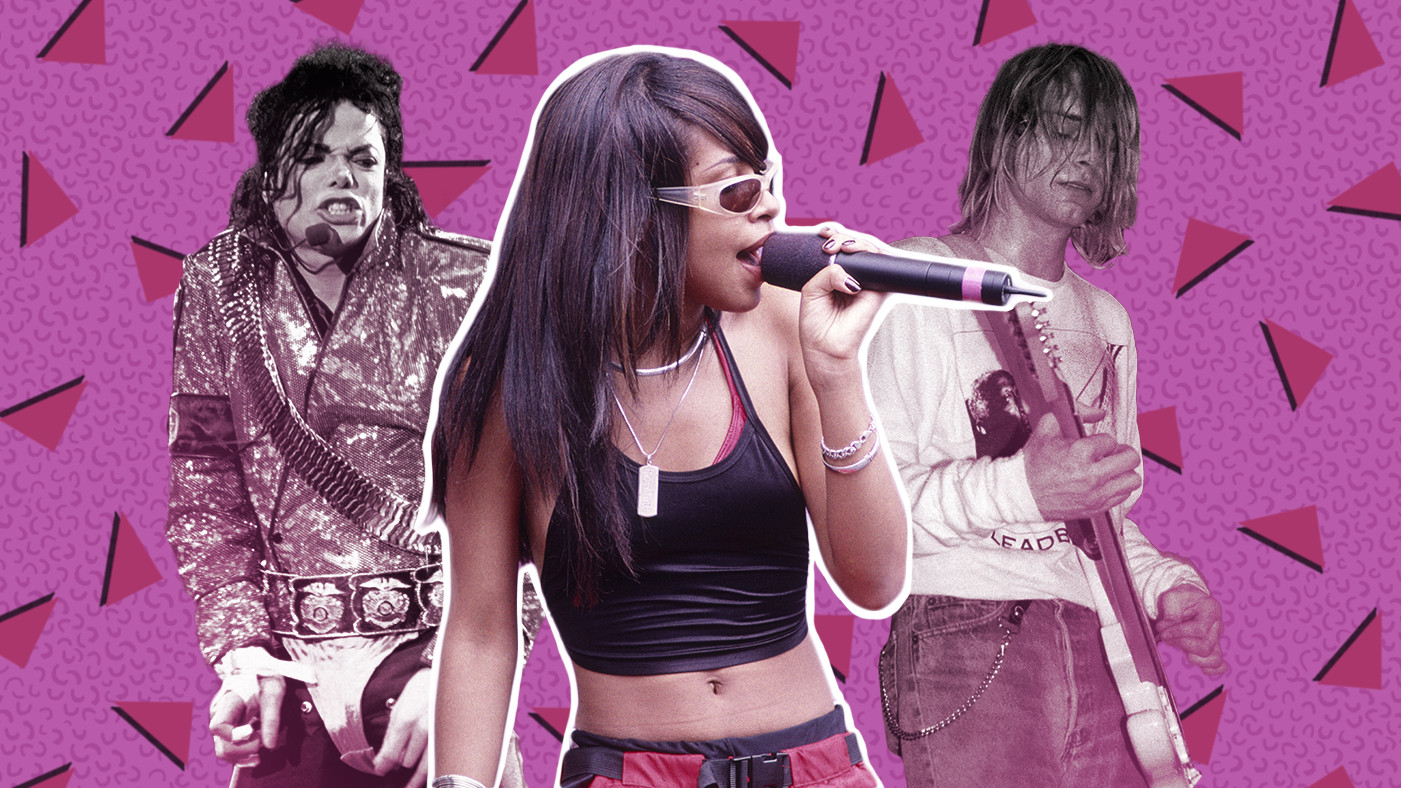 Missy Elliott in her iconic Supa Dupa Fly inflatable suit, a defining image of 90s hip-hop innovation and her groundbreaking style.
Missy Elliott in her iconic Supa Dupa Fly inflatable suit, a defining image of 90s hip-hop innovation and her groundbreaking style.
Pavement, “Gold Soundz” (1994)
Pavement’s “Gold Soundz” is like all the boyish heart-on-sleeve urgency of The Beach Boys’ Pet Sounds condensed into a mere three minutes. Stephen Malkmus and his slacker-rock crew waste not a single second of this song. Every guitar twang, every breathy mumble contributes to a note-perfect emotional surge. It’s almost as if they actually cared, or something. “Gold Soundz” is a quintessential Pavement track, showcasing their unique blend of lo-fi aesthetics and surprisingly potent emotional depth.
Dr. Dre and Snoop Dogg, “Nuthin’ but a ‘G’ Thang” (1992)
Dr. Dre, a seasoned producer with a successful career already behind him, returned even stronger with “Nuthin’ but a ‘G’ Thang,” thanks in no small part to the fresh talent of Snoop Dogg. This track’s iconic G-funk groove makes any car bounce, with a bassline as authentic and undeniable as “Real Deal” Holyfield himself. “Nuthin’ but a ‘G’ Thang” not only launched Snoop Dogg’s career but also redefined West Coast hip-hop and solidified Dr. Dre’s legendary status.
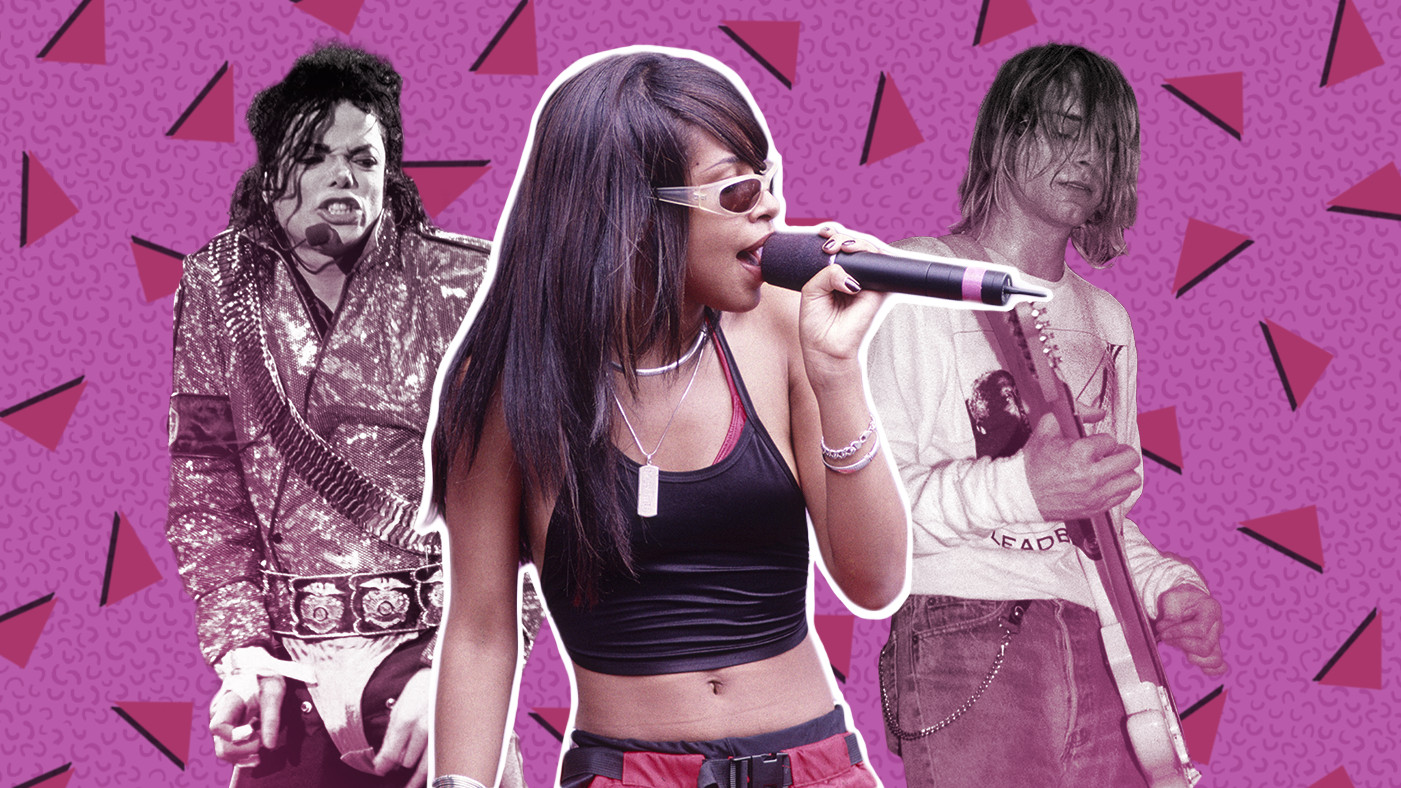 Dr. Dre and Snoop Dogg in the early 90s, icons of West Coast hip-hop and the G-Funk sound that dominated the decade.
Dr. Dre and Snoop Dogg in the early 90s, icons of West Coast hip-hop and the G-Funk sound that dominated the decade.
Bikini Kill, “Rebel Girl” (1993)
Bikini Kill, led by the ferocious Kathleen Hanna, along with their “token boy guitar player,” joined forces with Joan Jett in the recording studio and emerged with “Rebel Girl.” This seven-inch single delivered on every radical promise punk rock ever made. “Rebel Girl” is an anthem for the neighborhood girl with revolution in her hips, a powerful example of rock & roll with genuine political and emotional muscle. In the 90s, this kind of unapologetically feminist and politically charged music felt both necessary and, sadly, still somewhat bizarre to the mainstream.
Notorious B.I.G. With Mase and Puff Daddy, “Mo Money Mo Problems” (1997)
The late, great Notorious B.I.G. possessed more soul and swagger just clearing his throat before a verse than many rappers have in their entire discographies. “Mo Money Mo Problems,” featuring Mase and Puff Daddy, became an accidental epitaph for Biggie, reaching Number One shortly after his tragic death. Yet, the song’s celebratory and upbeat vibe makes him sound impossibly alive. A burning question remains: Did Mase ever get to see his name on a blimp? Regardless, “Mo Money Mo Problems” remains a timeless hip-hop classic and a poignant reminder of Biggie’s immense talent.
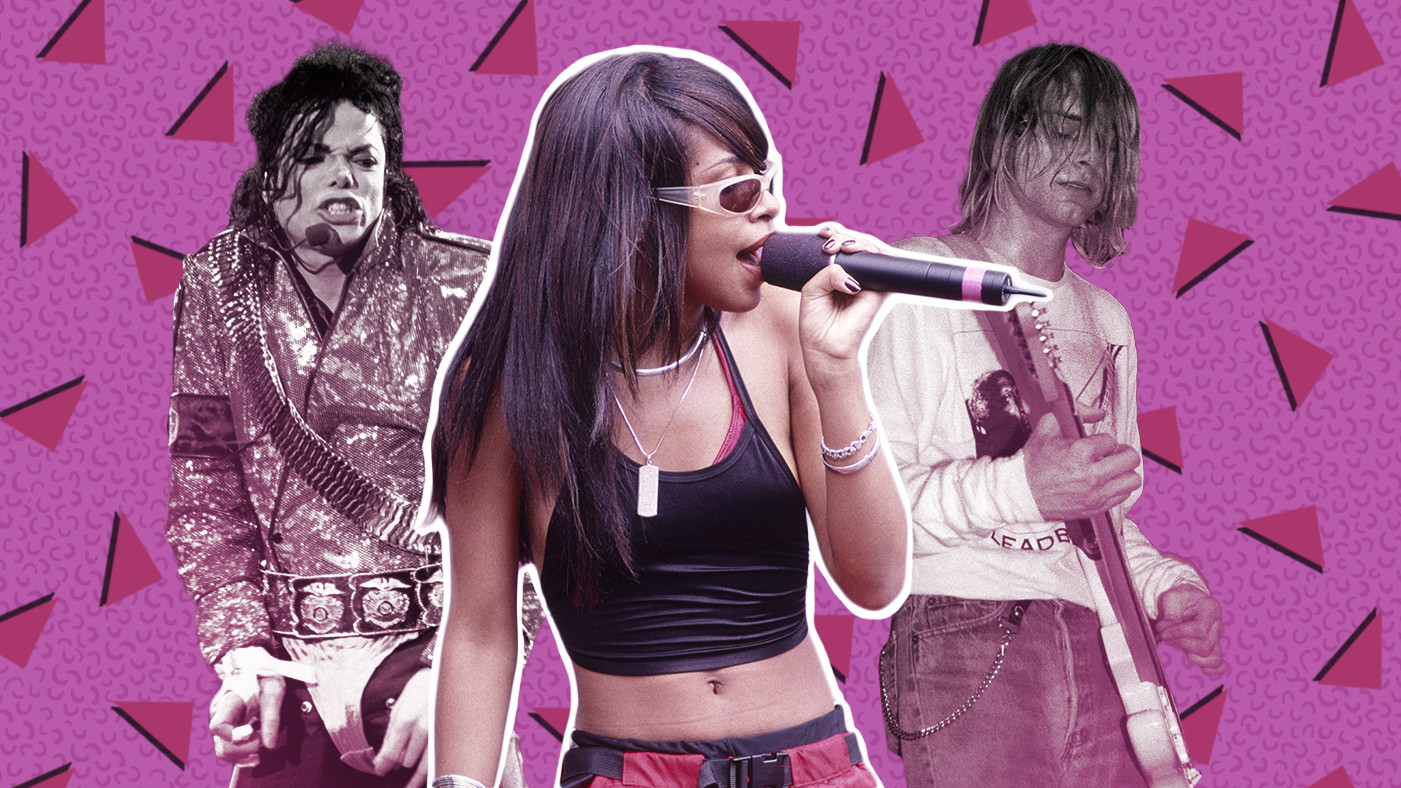 Notorious B.I.G. in a 90s photo, a legendary figure in hip-hop and a defining voice of the decade, remembered for his flow and storytelling.
Notorious B.I.G. in a 90s photo, a legendary figure in hip-hop and a defining voice of the decade, remembered for his flow and storytelling.
Blackstreet, “No Diggity” (1996)
Blackstreet’s “No Diggity” is a utopian celebration of all the rump-shaking glory of American music. Teddy Riley, the production genius from Virginia via Harlem, masterfully blended doo-wop, Dr. Dre’s G-funk, old-school R&B harmonies, a driving piano rhythm, and a sample of acoustic blues guitar from Bill Withers. We are all living in the future that “No Diggity” envisioned, a future made infinitely better by its existence. This song transcends genres and generations, a true testament to the power of musical fusion and a perfect embodiment of 90s musical innovation.
Nirvana, “Smells Like Teen Spirit” (1991)
“Smells Like Teen Spirit.” The song that truly blew up the world. It defied all conventional rules of music, packing raw emotion into four simple chords and a deliberately rough guitar solo. It kicked the future in the teeth, shattering complacency and challenging the status quo. “Smells Like Teen Spirit” was Kurt Cobain’s direct challenge to the audience, and after all these years, that challenge still resonates. This anthem of angst and rebellion remains the defining song of the 90s, forever altering the landscape of popular music and youth culture.
